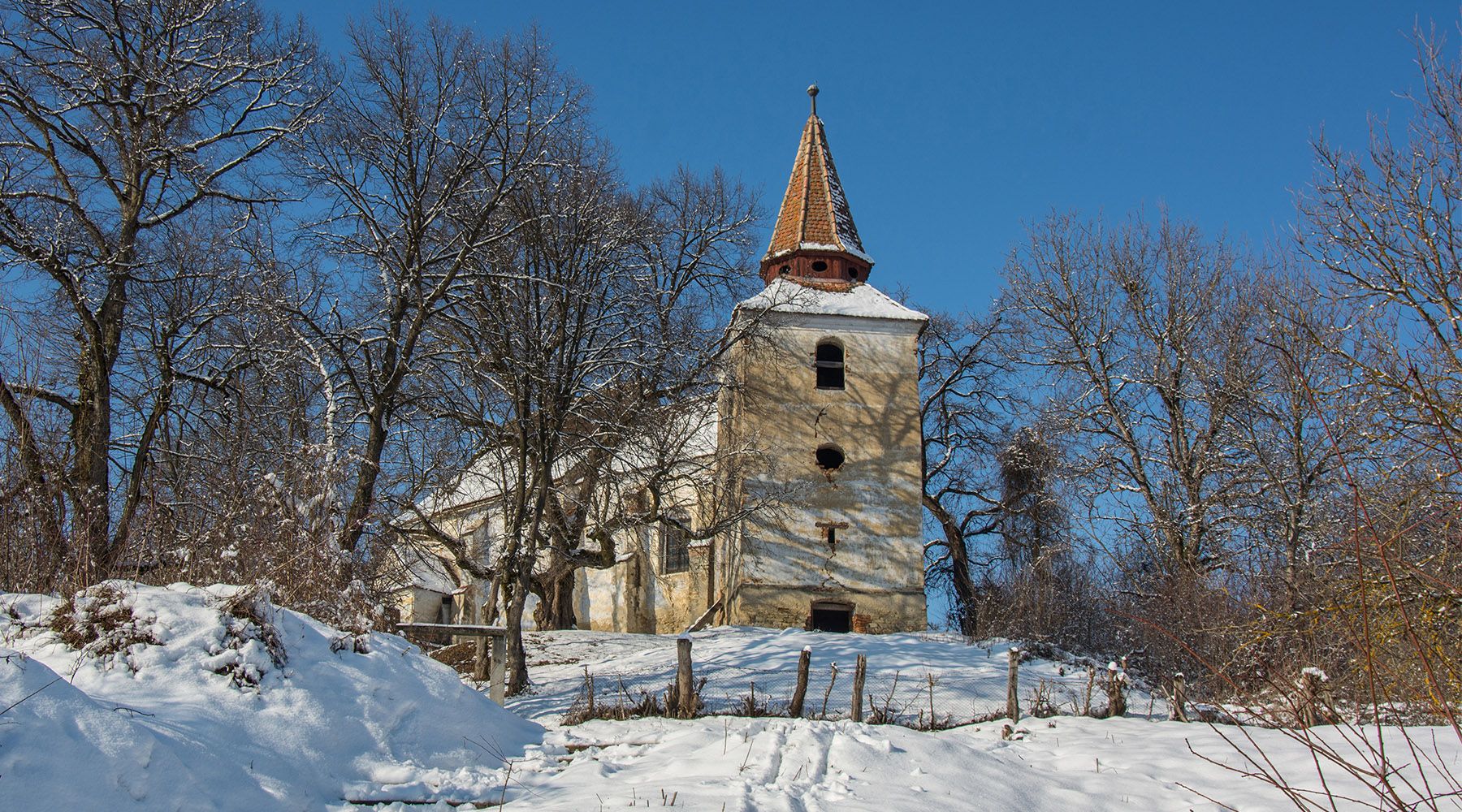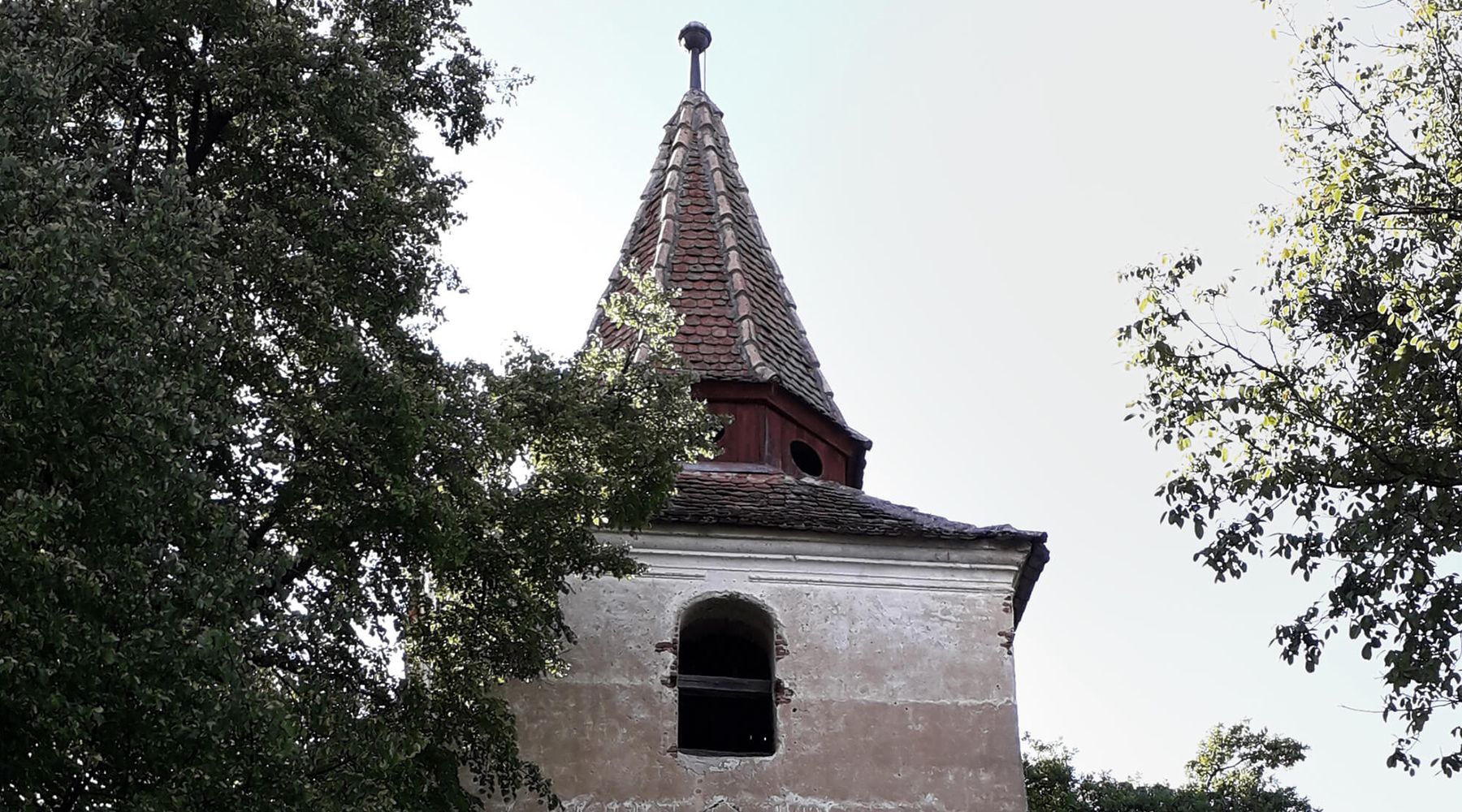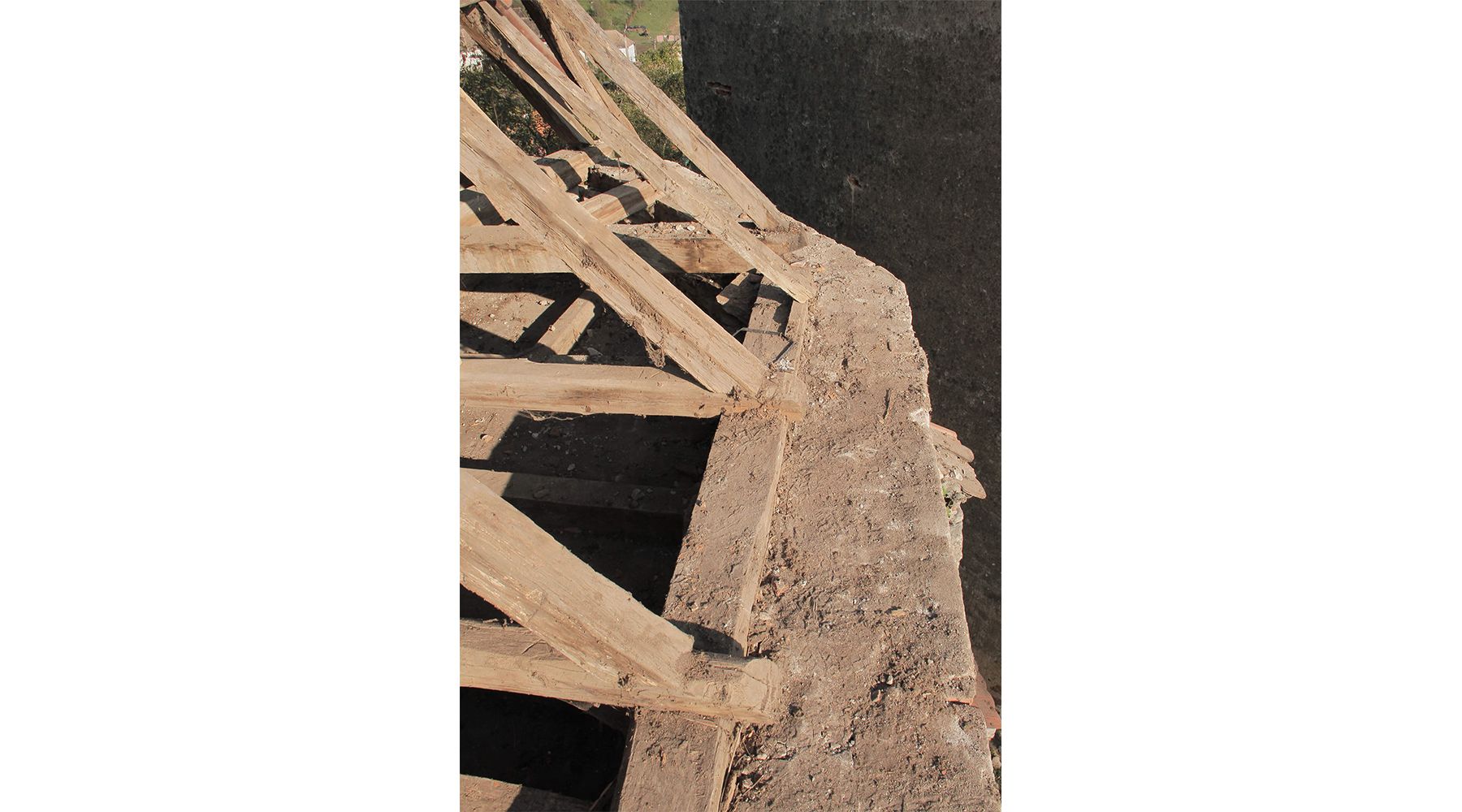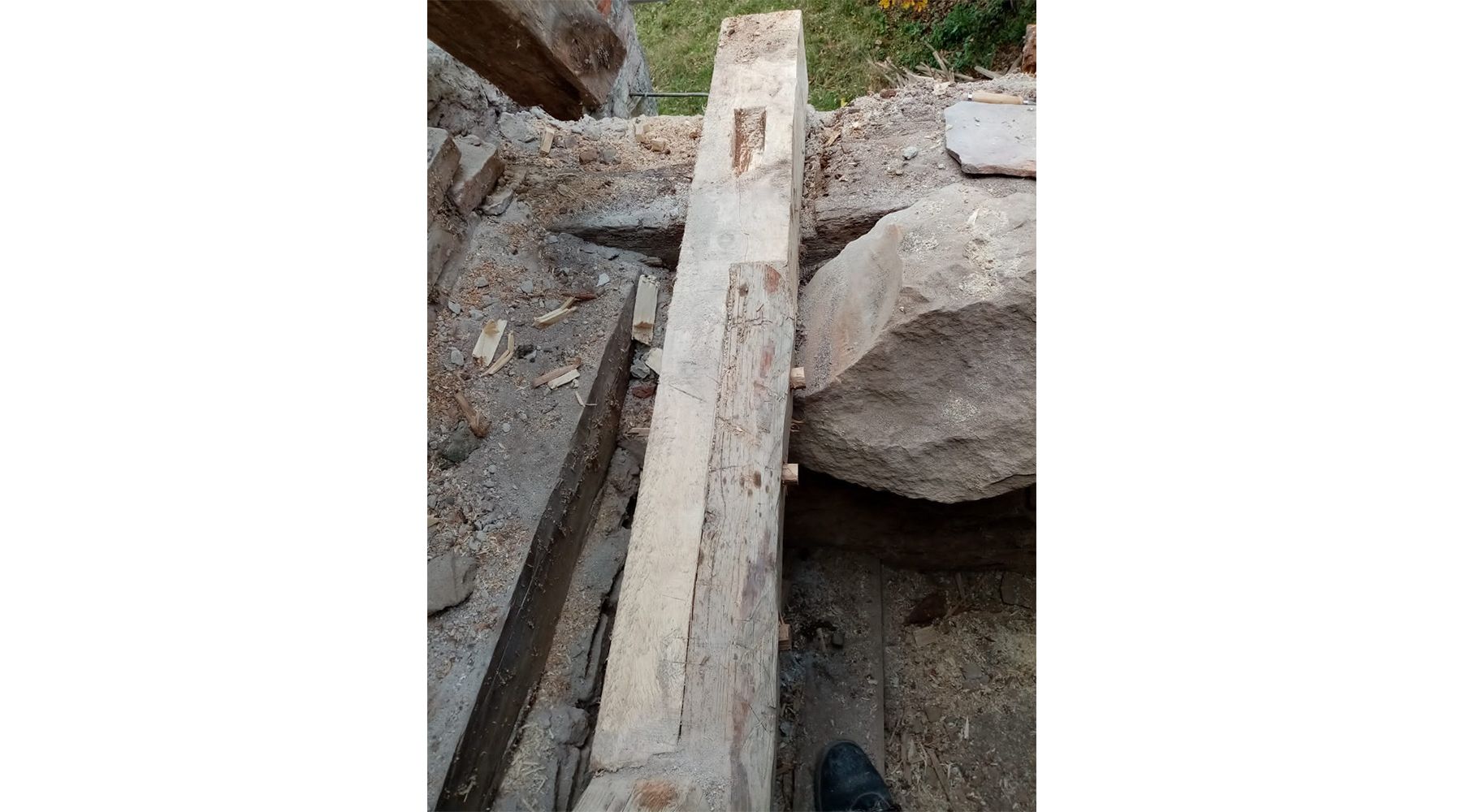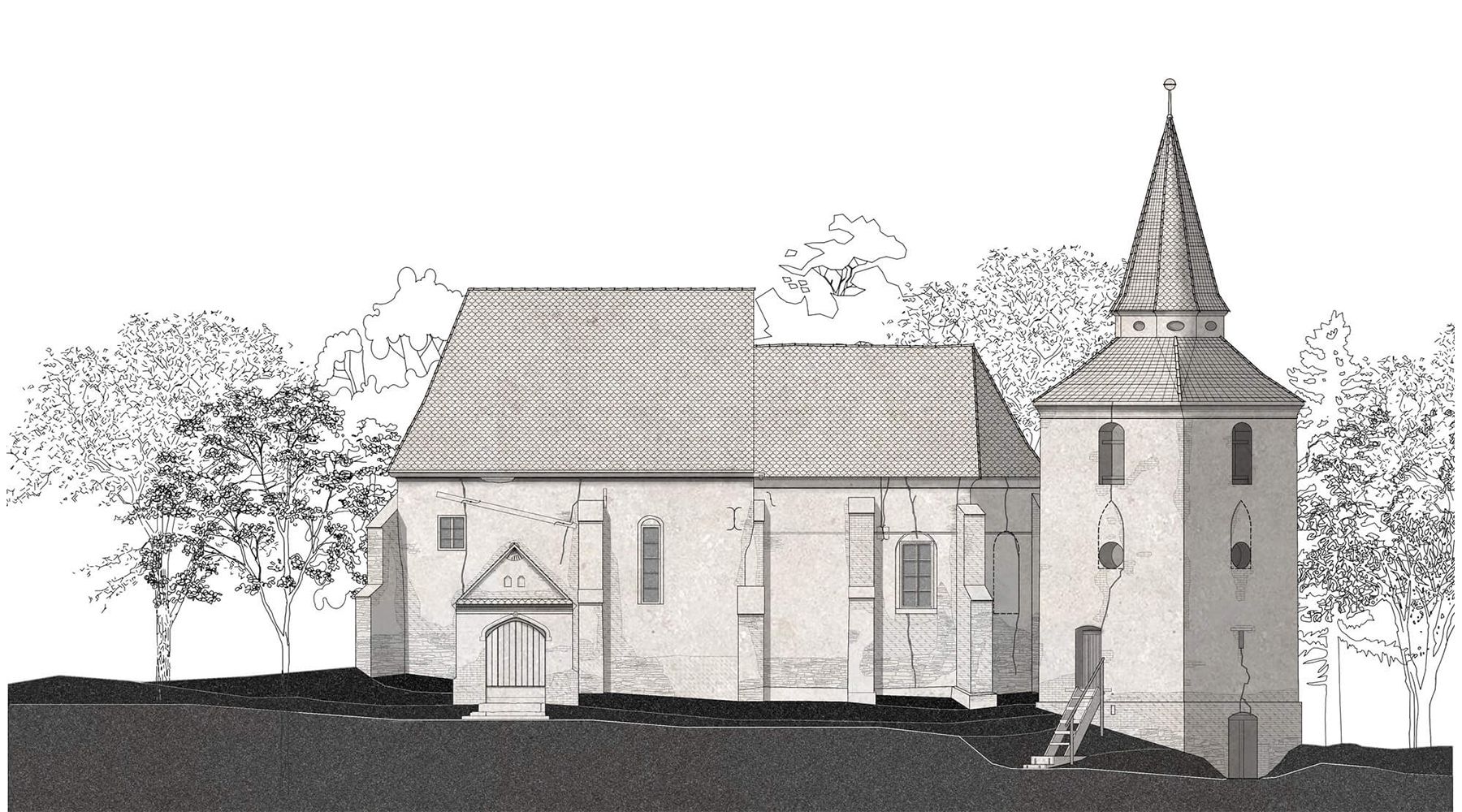The Evanghelic Church from Zlagna
There are over 160 fortified churches in Transilvania, approximately 100 built during the Middle Ages. Currently, more than half of them are in various states of disrepair.
Dächerprogramm (roof programme) refers to maintenance work for the roof of the buildings that are currently in an advanced state of degradation, and improvement of the water evacuation system. The main purpose of these interventions is to guarantee the preservation of these monuments through ensuring the sealness of the roof, therefore preventing water infiltration. The carpentry work is executed through traditional techniques, according to the standards of classical restoration. The ceramic tile cover is typically taken apart and checked manually, followed by the reuse of the elements that conform to the quality standards and replacement of the inadequate ones with second hand or manually produced tiles. The water drainage system is improved through cleaning the existing gutters, replacing the parts that are degraded, installing gutters where they are needed, or, alternatively, designing a duct on the perimeter of the building to direct the water outwards.
The fortified church of Zlagna Zlagna village is located 2 km away from the Mediaș-Agnita road, between Alma Vii and Pelisor, on the riverbed of the Zlagna creek. The whole of the evangelical church in Zlagna is located on a hill in the northwest side of the village and it consists of the church and the tower. These are inscribed in the List of Historical Monuments, with the code SB-II-m-B-12590 (15th-19th century). The church was built in the 15th century, in the Gothic style, hall type, with stone masonry, supported on the outside by buttresses, polygonal choir, pointed arch, semicircular arched windows, and choir windows with Gothic moldings.a Later, in 1793, a coffered ceiling was made. The church and tower complex have not been significantly altered over time. The bell tower was built near the church, and its current shape was made between 1828-1830. One of the small bells dates from 1800 and has a Latin inscription, while the large and the middle bell were build in 1923.

